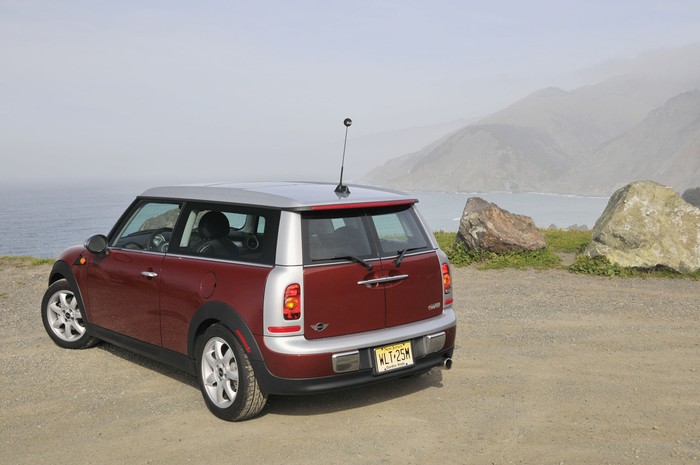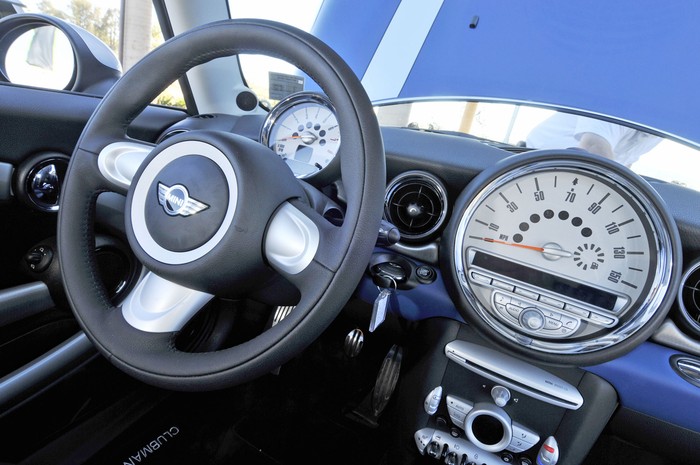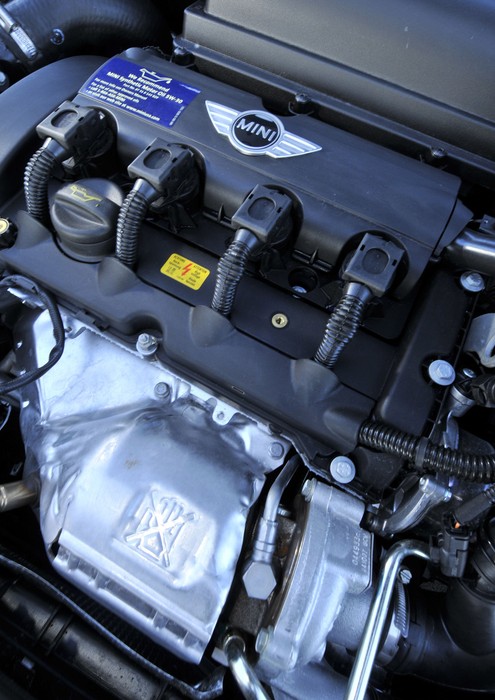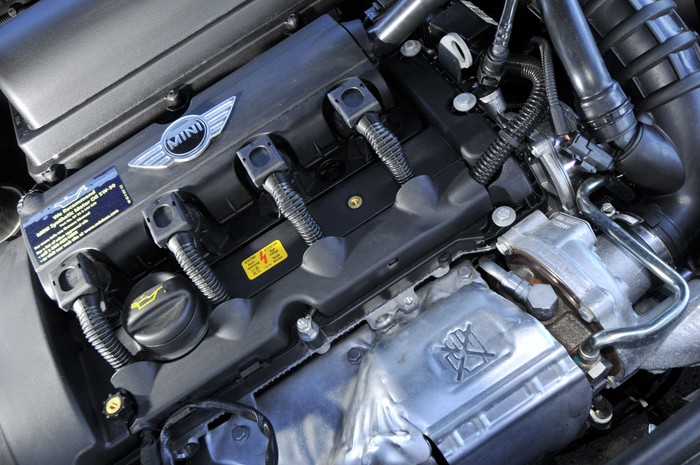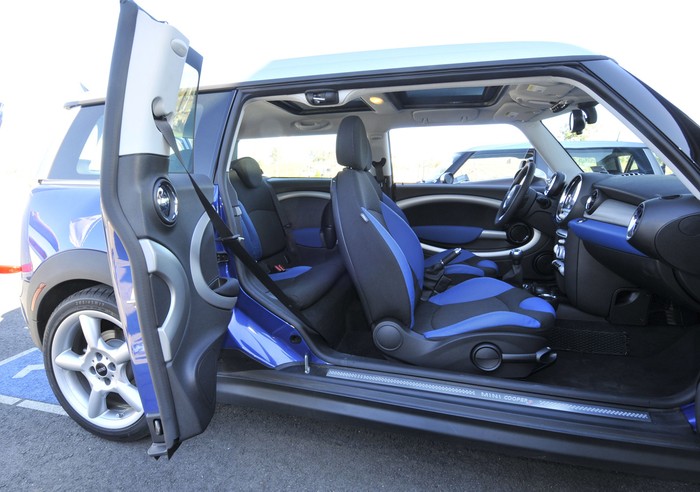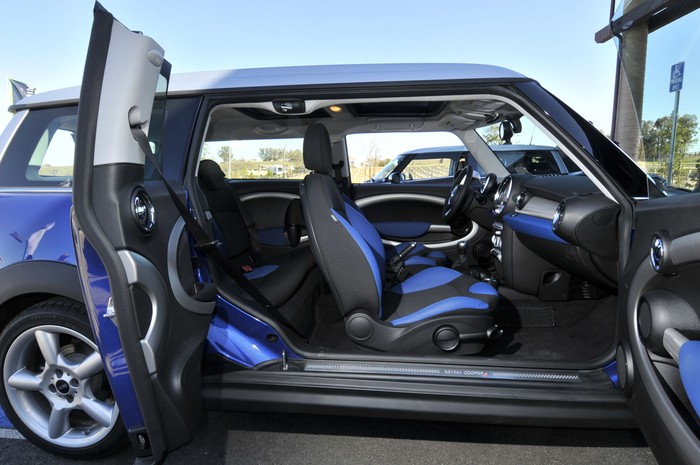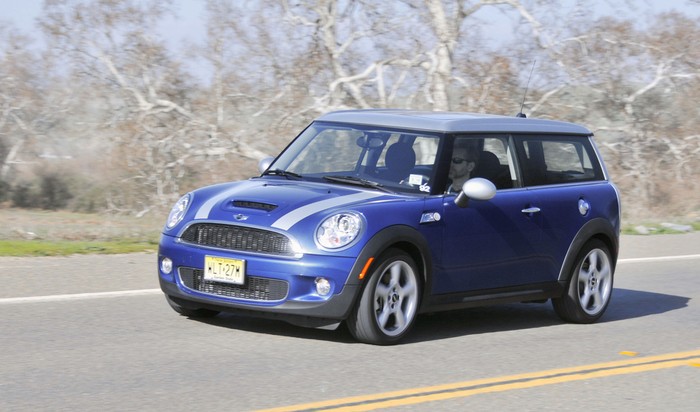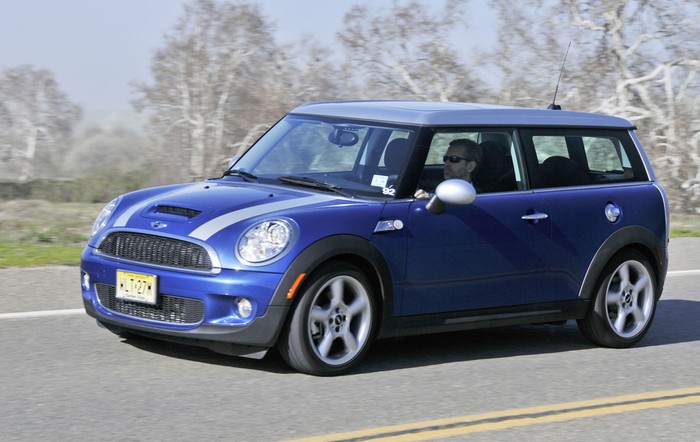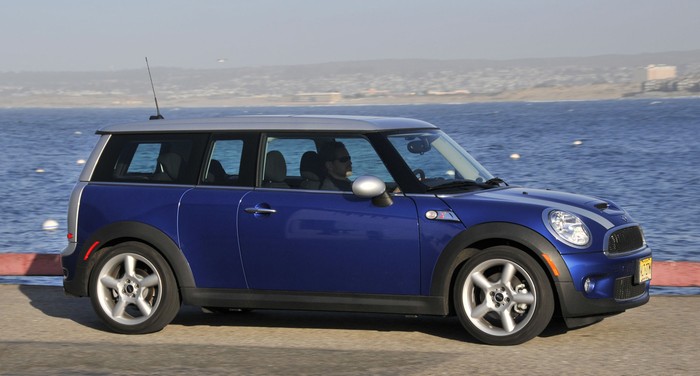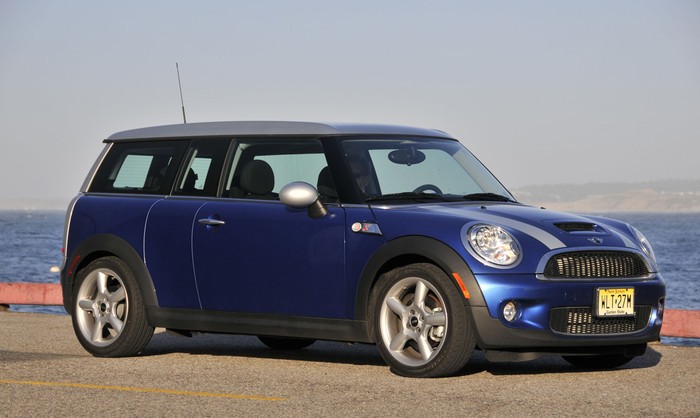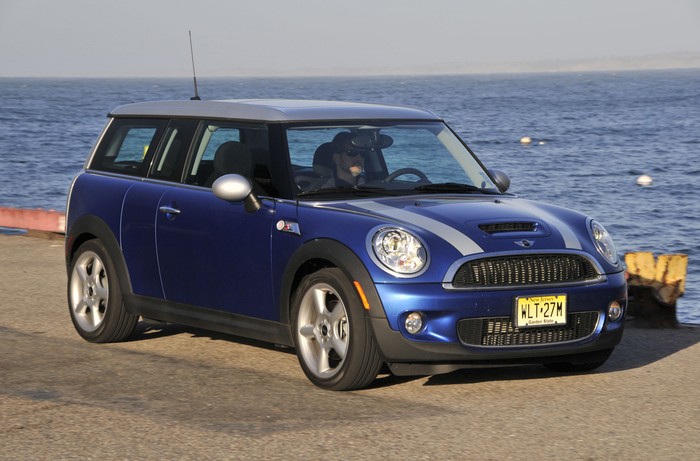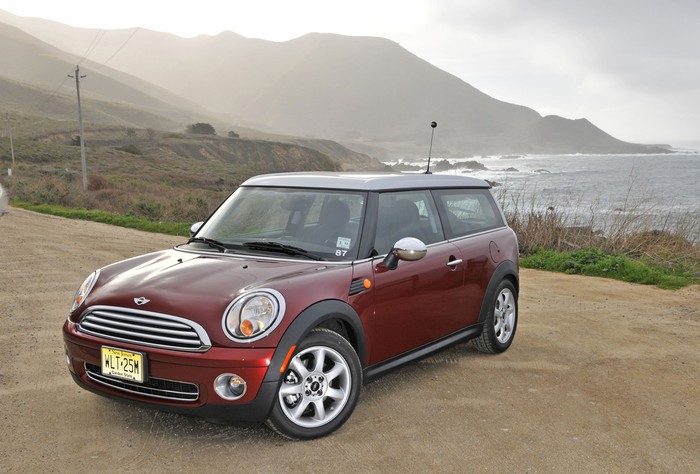
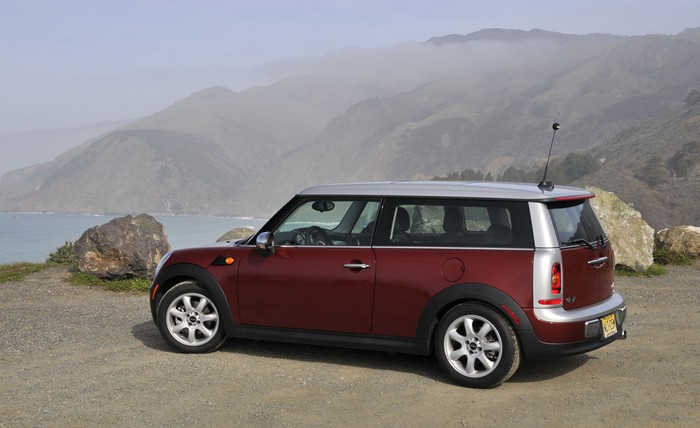
Review: Mini Clubman & Clubman S
The MINI Clubman, introduced in 2008 to extend the MINI line-up, is certainly larger and more practical than the current MINI hardtop, but the question journalists and the MINI cult have been asking is: Would the Clubman satisfy the three-part MINI goal of offering go-kart-like handling, unique design, and individuality?
After driving several versions of the new Clubman on the recent U.S. press introduction, over 150 miles of northern California roads varying from smooth six-lane freeways to steep one-lane switchbacks, our answer is unequivocal: the Clubman meets all the goals.
Backstory
There has been no question that BMW hit the ball out of the park when it introduced the new MINI Cooper in 2001. Even the most optimistic of their executives have admitted the car succeeded beyond their wildest expectations. Its success justified the addition of a convertible in 2004, and then a second-generation version of the hardtop in 2007 to improve the MINI's fuel-efficiency and reduce emissions without reducing performance.
The problem is that one home run may not be enough to win the game, much less the series. BMW knew that they had to extend the product line to reach additional buyers. What they heard in focus groups after introduction of the first MINIs was "We'd love to own a MINI Cooper - they're so cute and look like they're so much fun to drive - but they're just a little too small for our family." BMW's response to that unmet need was the Clubman, introduced in Europe last fall and in the North American market this February.
The new Clubman models use the same naturally-aspirated and turbocharged engines that were introduced in 2007 in the second-generation hardtops. However, to extend the product line, the Clubman is different from the hardtop in two important dimensions. The wheelbase has been extended by 3.2 inches and the overall length by 9.4 inches.
In practical terms, these changes translate into 2.4 inches of additional leg room and 1.2 inches more shoulder room for rear-seat passengers, an increase of 3.5 cubic feet of space behind the second seat, and an increase of 7.2 cubic feet in total cargo space.
Aesthetics - (4/5)
Two major changes were made in the body style to provide access to the increased interior space. First, a narrow rear auxiliary door that MINI calls the "club door" has been added to the right-hand side of the car, the curbside in the majority of global markets. Hinged at the back, "suicide style," this door forms part of the latch pillar for the front door and so can only be opened when the right front door is open.
With both doors open, the entry to the rear seats is very wide and welcoming, making it easy for passengers to get in and out. Given that rear seat space is still only adequate for two children, or for two adults on short trips, this feature is more likely to be attractive to parents installing their children into rear safety seats or unloading cargo, but for those purposes it definitely will be appreciated.
Second, to increase usable cargo space, MINI designers made the rear end nearly vertical, with access to the cargo area provided by a "split-door" that is hinged on the sides and opens in the middle, inspired, said Marcus Syring, the chief exterior designer on the Clubman, by the Mini Countryman and Traveller of the 1960s.
Admittedly, the extended length makes the Clubman look somewhat awkward. It's definitely not as attractive as the regular Cooper, but one can get used to it. We think MINI should have made the roofline more sloped for a sleeker look. The "club door" on the right makes the Clubman look better proportioned from the side, so we think designers should have put the feature on the left side as well.
When the stylists under Syring designed the rear end of the Clubman, they also took their inspiration from the wood trim on the original Countryman and Traveller and framed the doors with contrasting trim that matches or contrasts with the roof color and extends down the C-pillars and across the bumper under the doors. The overall look makes a strong statement that this is a different model of MINI, and contributes positively to the defined goal of making the MINI design unique on the road. Unfortunately, it doesn't look very attractive in most colors, so it will be up to buyers to pick a tasteful combination.
Hinged at the extreme outside, the doors don't obstruct loading at all, though they don't provide any shelter when loading cargo in the rain. An interesting detail is the large openings for the rear lights, which are part of the body rather than part of the door, so that the tail lights will be visible from the rear even when the doors are open. They do constrict the size of the tail lights, which look a little small.
In addition to these changes, the longer roof was strengthened both visually and physically by sculpting front-to-rear "dune ridges" along the edges of the roof. An optional roof rack base mounts over these ridges, with a range of carriers to load the skis, snow board, mountain bike, kayak, surf board, or equipment box for the outdoors-oriented owner.
Pursuing the goal of allowing owners to individualize their cars, the MINI design team expanded the range of available paint colors with the addition of the Clubman-only "Hot Chocolate" in addition to two colors of red, three colors of silver, and two colors of blue, plus green, yellow, white, and black. Since the rear door edge trim is available in black or silver, and the roof is available in black, silver, or body color, the MINI Clubman can be ordered in any of 44 different exterior color combinations. As mentioned above, customers will have to choose their colors wisely. We'd go for the monotone look.
Cabin - (3/5)
The interior of the new Clubman offers a mixture of impressions, with the view forward from the driver's seat almost identical to that in the second-generation MINI hardtop introduced in 2007, but looking back in the rear view mirror or from the side through the generous passenger door opening, the interior of the Clubman is quite different from the hardtop.
We like the driving position and support offered by the MINI seats, and the positions of the primary controls, very much.We also don't mind at all the iconic center-dash location of the speedometer dial and ancillary controls, which are easy to read and reach.
However, it's still hard to warm up to the larger speedometer dial of the second-generation interior, and the bland gray plastic surfaces of the audio and HVAC controls looks like something off a toy karaoke machine.
With that exception, the MINI definitely represents the thoughtful design detail and build quality which BMW represents. The MINI may, in fact, have been the first car line to call itself a "premium compact" car.
Behind the front seats, it is clear that this is a different model of MINI. The side panels next to the rear seats echo the shapes of the front door panels, and the dished rear seats look comfortable and inviting enough to justify MINI's claim to "lounge ambience." Like the classic Minis, there are numerous convenient storage slots in the rear, so the area looks almost functional.
Unfortunately, this impression is more visual than actual. With just a little more than three additional inches to work with, the designers have made it possible, barely, to get two average size adults seated in the space, and it is easy for them to get in, but they'll be happy to get out after only a few minutes. The space will work for two pre-teen children however, and new parents will find it ideal when installing younger children into safety or booster seats.
The rear seat space and cargo capability is where the MINI Clubman really excels and it should easily fill the requirements of a multi-function automobile for a small family.
With the seats up, there's enough room behind the rear seats for five or six grocery bags, a couple of large duffle bags, or a baby stroller. Folding the rear seats forward form a flat load floor flush with the rear door sill, with space for over 30 cubic feet of cargo. A neat little storage box, with enough room for road emergency tools or a couple of umbrella chairs, is hidden under a lid in the rear floor area.
Visually, the new "color line" of soft trim across the center of the dash board and continuing into the doors, available in five different colors, adds an attractive design feature to the interior look of the car. The hard trim surfaces, available in six different materials including piano black and English oak as well as different metallic surfaces, and seat coverings available in nine different color and material choices create a huge number of possible combinations.
This broad palette of interior choices, helps achieve the second of the three-part definition of MINI-ness, individualization. The possible general impressions vary from tasteful old English library to post-modern dance club.
Combining available interior color combinations with the exterior combinations, it is possible to create any of 11,000 different visual looks for the MINI. Including the wide range of performance and accessory options, MINI calculates that there are a trillion possible ordering combinations. With odds like that, it's almost impossible to find two MINIs that are exactly alike.
With individuality as the third part of the MINI credo, customers are encouraged to order their own car and have it built in exactly the colors and accessories that they want rather than, as with many other manufacturers, being forced into buying whatever is in dealer inventory, and the majority of all MINI buyers do exactly that.
Technology (3/5)
Aside from the air-pistons that assist in opening the side door and rear cargo doors, there are no new technology breakthroughs on the Clubman that weren't already available on the Cooper and Cooper S coupes.
Chief among these are the electronically-assisted steering, which significantly reduces steering effort at low speeds to improve parking lot maneuvering, tightens up at higher speeds, and varies assistance slightly to keep the car from responding immediately to small steering wheel movement at high speeds.
The throttle input on the MINIs is routed through the engine control unit, rather than being connected directly to the throttle bodies, so that acceleration isn't directly proportional to pedal pressure. It is programmed to improve gas mileage for careful drivers, but gradually changes in response to more enthusiastic driving.
Both the steering assistance and the throttle tip-in are altered by the sport button option, if that is installed.
Within the two engines, BMW has done some very innovative work with valve timing, a water pump that shuts off when not in use, and other means of improving gas mileage, so a careful driver can get fuel economy that rivals many of the hybrids on the road. Too bad that the even-more-economical MINI diesel can't be marketed in North America.
Performance (5/5)
On the specification sheets, the nine inches of additional length and three inches of wheelbase in the Clubman add just over 200 pounds to the weight of the car, which reduces zero to 60 performance by only three-tenths of a second, from 6.7 seconds in the manual Cooper S hardtop to seven seconds in the manual Cooper S Clubman. The Clubman's 36.1-foot turning radius is only one foot longer than that of the hardtop.
In overall performance terms, testing the Clubman on the two-lane scenic curves of the Pacific Coast Highway, on steep and narrow backroads, on the freeway, and even on an autocross course, we found that that the Clubman was more stable at high speeds and smoother over bumps on the highway than its shorter hardtop sibling. By comparison, the hardtop is quicker on turns but a little twitchier on the freeway. Since most buyers will be getting the Clubman for family use, we expect they will probably be happy to trade off a little driving fun for greater cruising comfort.
For our morning vehicle, we took one of the turbocharged Cooper S Clubman models that boasts 172 horsepower and 177 pound-feet of torque. On our return trip up Route 1 in the afternoon, we would drive the Cooper Clubman, with 115 horsepower and 114 pound-feet of torque. In both cases, we drove the Clubman with the six-speed automatic.
We had no complaints with either version of the MINI under any of the varied conditions we experienced. The power-to-weight ratio of the naturally-aspirated Cooper is completely capable of handling on-ramp merges into 80 mph traffic, and passing maneuvers on two-lane secondary roads to get around the agricultural vehicles we occasionally encountered, and steep grades on the rougher backroads.
If your satisfaction comes from knowing that you're getting between 29 and 32 miles per gallon in combined driving, while having a car that offers every active and passive safety feature being built into any car today, at a reasonable buy-in price, then you'll be quite happy with the Cooper Clubman.
On the other hand, if you equate driving fun with zippy, zoomy acceleration up freeway on-ramps or powering out of a corner with the turbocharger whine counterpointing the firm g-forces, the turbocharged Clubman S is the way to go.
We might prefer the six-speed manual transmission, but we found that the automatic gear selection of the six-speed automatic operated perfectly well with either the Clubman or Clubman S. In the stop-and-go traffic we encountered at the beginning and end of our drive, the auto box was probably better and more consistent than we would have been able to manage with speed and power requirements changing so frequently.
Both of our test cars were equipped with the optional "Sport Button," which changes the tip-in on the electronically-controlled throttle and the response on the electrically-assisted steering for both the manual and automatic cars. On the automatic, it also raises the shift-point of the automatic transmission, allowing the driver to toggle between performance and eonomy when driving. This little button is a critcal option for the Clubman S, but probably unnecessary for anyone buying the Clubman for economical transportation.
A brief lunchtime run over a tight autocross course did underline one difference between the Clubman and the regular Cooper. In a tight hair-pin turn at the end of a high-speed section, the Cooper could be made to come around much more easily, even displaying a little oversteer with judicious use of the throttle. By contrast, the Clubman simply refused to turn and had to be reined in to stay on the course.
On the other hand, the Clubman is more smooth and stable over uneven highway surfaces, and less frisky at straight-ahead speeds, contributing to a more comfortable experience on the high-speed sections of the route.
If we were driving with a spouse and a child or two in the back seat, as many Clubman buyers will likely be doing, we'd likely trade off a little go-kartness in solitary driving for the ride comfort that the Clubman offers.
Bottom Line
If you've been intriqued with the cute look of the new MINI, but just couldn't justify it because it just wasn't suitable as a family car or practical all-purpose daily driver, the Clubman is definitely worth a closer look. All you need to decide is whether you're going for performance or economy in your purchase, to help you decide whether to opt for a manual-transmission turbocharged Clubman S Clubman, or at the other extreme, an automatic transmission Clubman.
No matter which you select, you can be sure of three things. The design will be unique, the MINI you order will express your individuality, and you'll have a car that handles more like a go-kart than anything else that nearly as practical on the road today.
Words by Gary Anderson. Photos by Mark Elias
